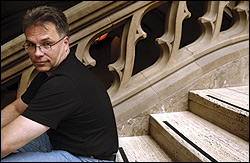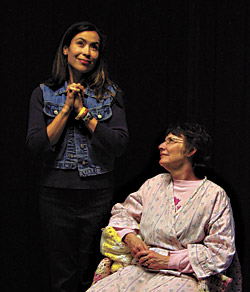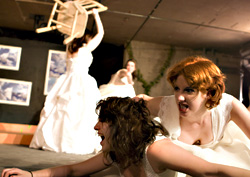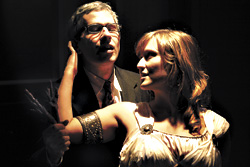In recent weeks, the nation’s leading newspapers have trumpeted the impending death of arts criticism, but it’s newspapers themselves that are ailing: University of North Carolina professor Philip Meyer calculates they’ll lose their last reader in October 2044.
Arts criticism, however, is thriving, as bloggers shout down the newspaper critics’ monopoly. Critic-turned-blog-crusader Jeff Jarvis (who hired me as Entertainment Weekly‘s video critic in 1990) now says people like me should be sacked and replaced by the bloggers he calls “10 million Luthers pounding at the door.”
“It’s a great time to be a critic,” says Douglas McLennan, a Seattle P-I and SW vet who now runs the Web site Artsjournal.com.
One hook for the critics-are-dead story was the death of Columbia University’s National Arts Journalism Program, which made prestigious Fellows of four Seattleites (McLennan and The Seattle Times’ Misha Berson, Carole Carmichael, and Paul de Barros). NAJP famously documented the 23 percent decline of newspaper arts coverage between 1998 and 2003. So it’s news that NAJP itself shrank out of existence.
Yet, the recent obits for arts criticism have been premature, as demonstrated by last month’s huge National Critics Conference in Los Angeles. “If criticism is dead,” asks de Barros, “what were those 500 people doing in Los Angeles?” “We were expecting [only] 300,” says conference co-instigator Johanna Keller.
For 11 years, admits Keller, NAJP “has been a beacon in the dark for arts journalism, but others have taken up the torch”—the Getty Arts Journalism Fellowships at USC, the NEA Institutes for Critics, and of course, Keller’s new Goldring Arts Journalism M.A. program at Syracuse University, one of the nation’s first graduate programs for critics. Besides, even NAJP isn’t necessarily dead yet, says Fellow-turned- advisory-board-member McLennan. The program has “maybe $100,000 to $150,000” in funding potentially transferable to a new home, as early as fall 2006. “I wouldn’t say I’m completely pessimistic,” says McLennan, who won’t name the two places he’s having “very serious conversations” with. Keller won’t deny or confirm that hers is one.
Newspaper types can still sound upbeat under blog assault. “It’s more the death of one kind of critic,” says de Barros, “the curmudgeonly esthetic arbiter, and the birth of other kinds. Let’s have a panoply of opinions.”
“Newspaper art critics in the old days were awful,” says P-I art critic Regina Hackett. “Boosters at best and self-absorbed nay- sayers at worst. Art criticism is far better now.” And Web newcomers like Artsjournal.com and P-I freelance dance critic Jim Demetre’s wide-ranging Artdish.com intensify the debate. Readers win, as bloggers de- and reconstruct local newspaper reviews (including Demetre’s) on Artdish, and force surviving newspaper critics to sharpen their game. “I don’t have time to listen to every album 100 times,” says de Barros, “but somebody out there does and writes about that E-flat triangle ping at 1:16 and how could I miss that it’s a tip the musician took a trip to Mozambique in 1915?”
Full-time critic gigs are increasingly rare—the L.A. Times is entering its fourth year with no staff drama critic, and The Seattle Times is not racing to hire a dance critic. But maybe there’s a future for the top bloggers. “I probably do better than when I was at a daily,” says McLennan. “I get 20–25,000 hits a day and 25,000 premium newsletter subscriptions, and my classified ads sell out weeks in advance. I get asked to speak all over the country, and freelance for The New York Times, L.A. Times, Evening Standard, Newsweek.
“If I was just the music critic for the P-I, I couldn’t [do all that].”








